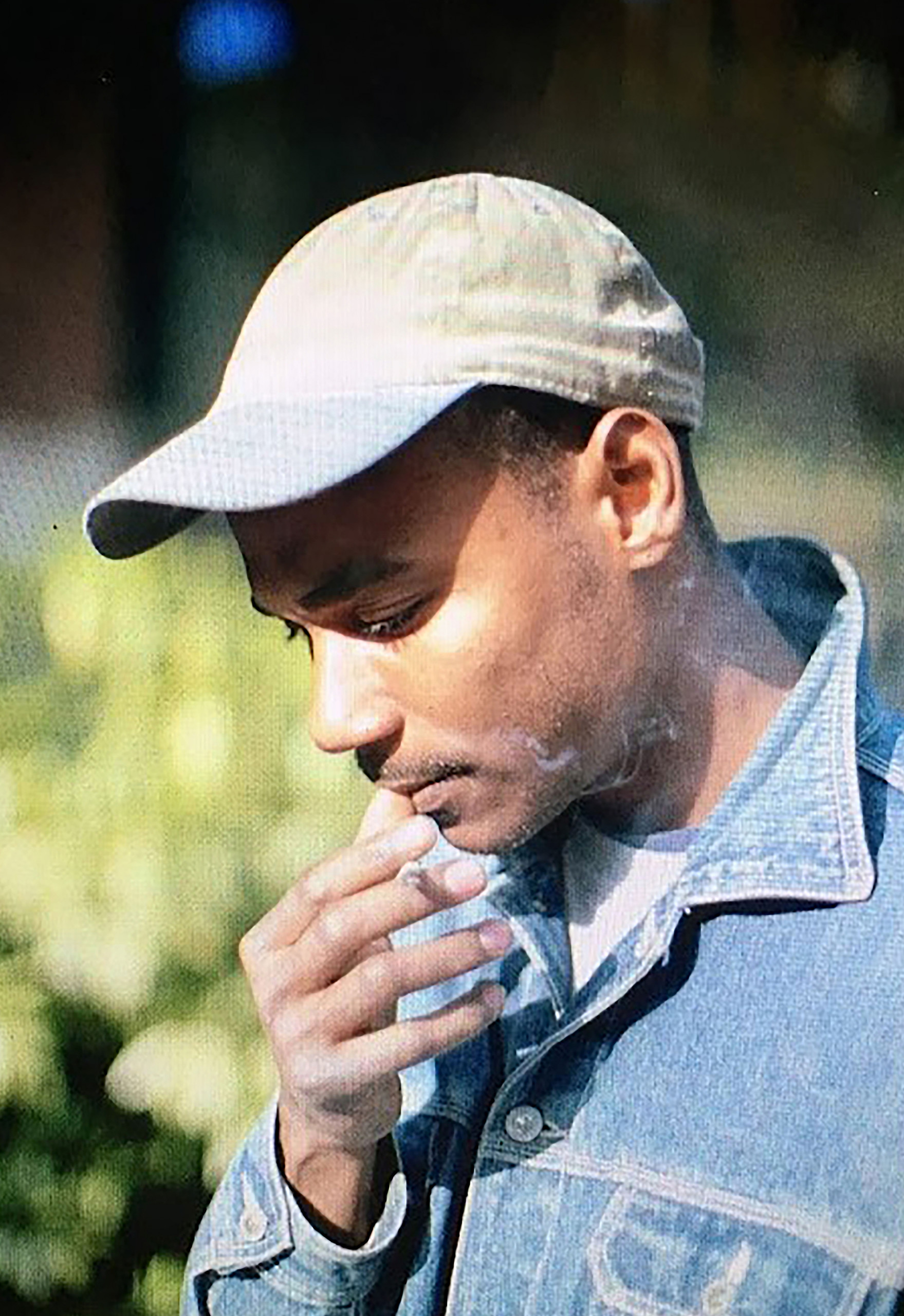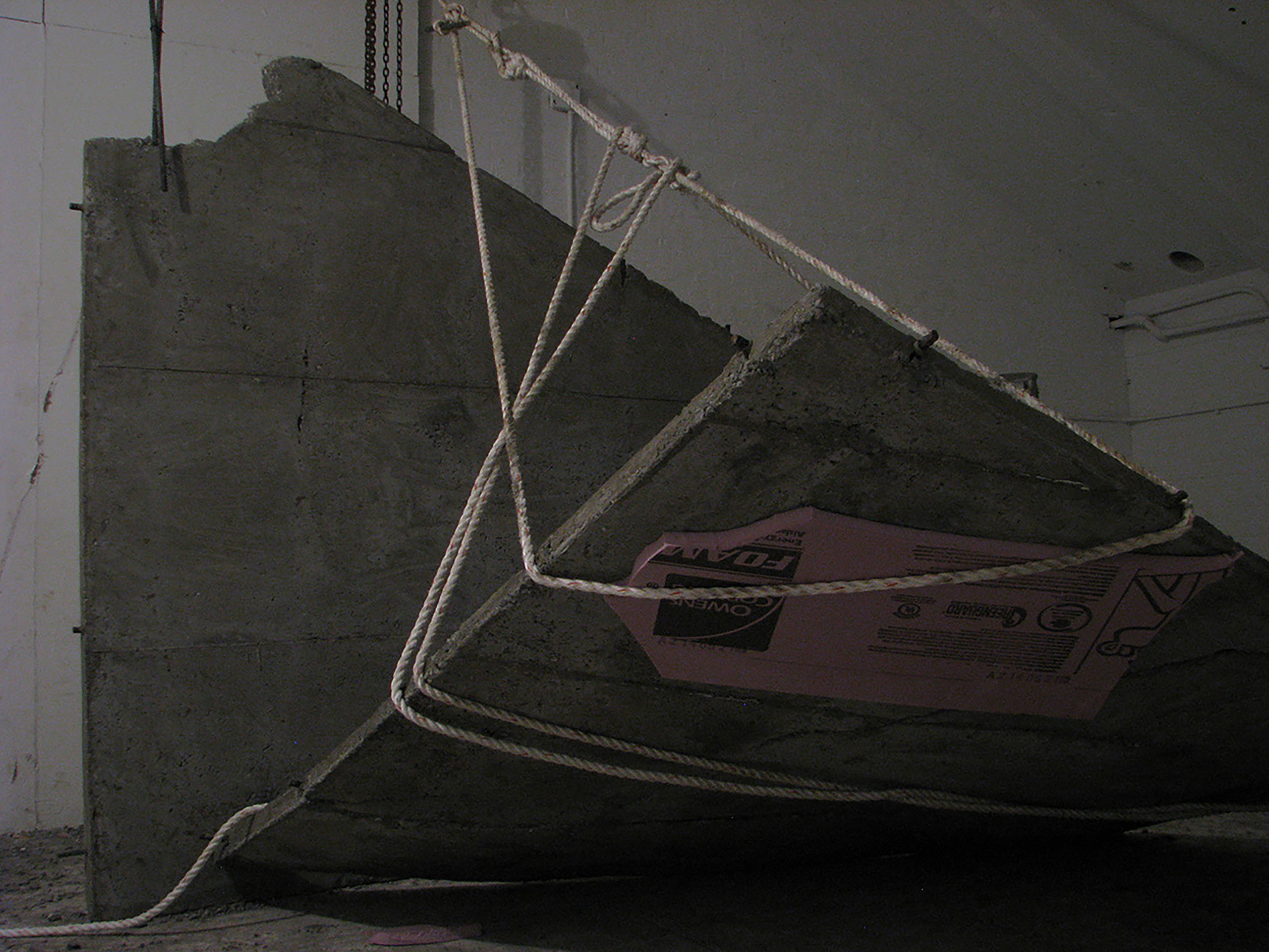What does it mean to be an artist citizen? Through dialogue-provoking works and an approach to practice that extend across disciplines, Keiron de Nobriga, BFA Fine Arts ’16, reveals the ways an artist might engage with the world and fundamental questions of society.
At Pratt Institute, de Nobriga, who received the Charles Pratt Memorial Scholarship in 2015, shifted from a focus in graphic design to sculpture and integrated practices as a means of exploring and communicating about labor and the human experience. After graduation, he strived to create a balance between work and practice that would continue to nourish him intellectually, drawn to robotics and digital media. This fall, de Nobriga is entering a new chapter, inspired by his exposure to architecture at Pratt, studying the subject as a graduate student at Cornell University in Ithaca, New York.
This past summer, de Nobriga conversed with his mentor, Pratt professor Analia Segal, who coordinates and teaches in the Sculpture and Integrated Practices program in Fine Arts at the Institute. In this edited interview, the two discuss mentorship, dimensions of labor and rest, and what Segal describes as a “sculptural way of thinking” that informs de Nobriga’s ability to meet challenges as opportunities for transformation.
Analia Segal: Keiron, I was always impressed by your determination. Your focus and interest in the ferocity of the practice was clear from the very beginning. Emphasizing this idea of sculpture and integrated practices, you were not just developing technical skills but also understanding how they could serve as a means of communication. We share that point of view, which is clearly one of the many reasons we have kept in touch. It was beyond the studio; there was interest not just in the making of [work] but in understanding how it was functioning in society in different ways.
Keiron de Nobriga: I took one of your seminar classes, and that completely shifted my thinking. It was a real introduction to contemporary sculpture. And there were these ideas, this way of approaching what I understood as “sculpture” in new ways. Treating the world as material, and using your ideas as tools, that really invigorated me.
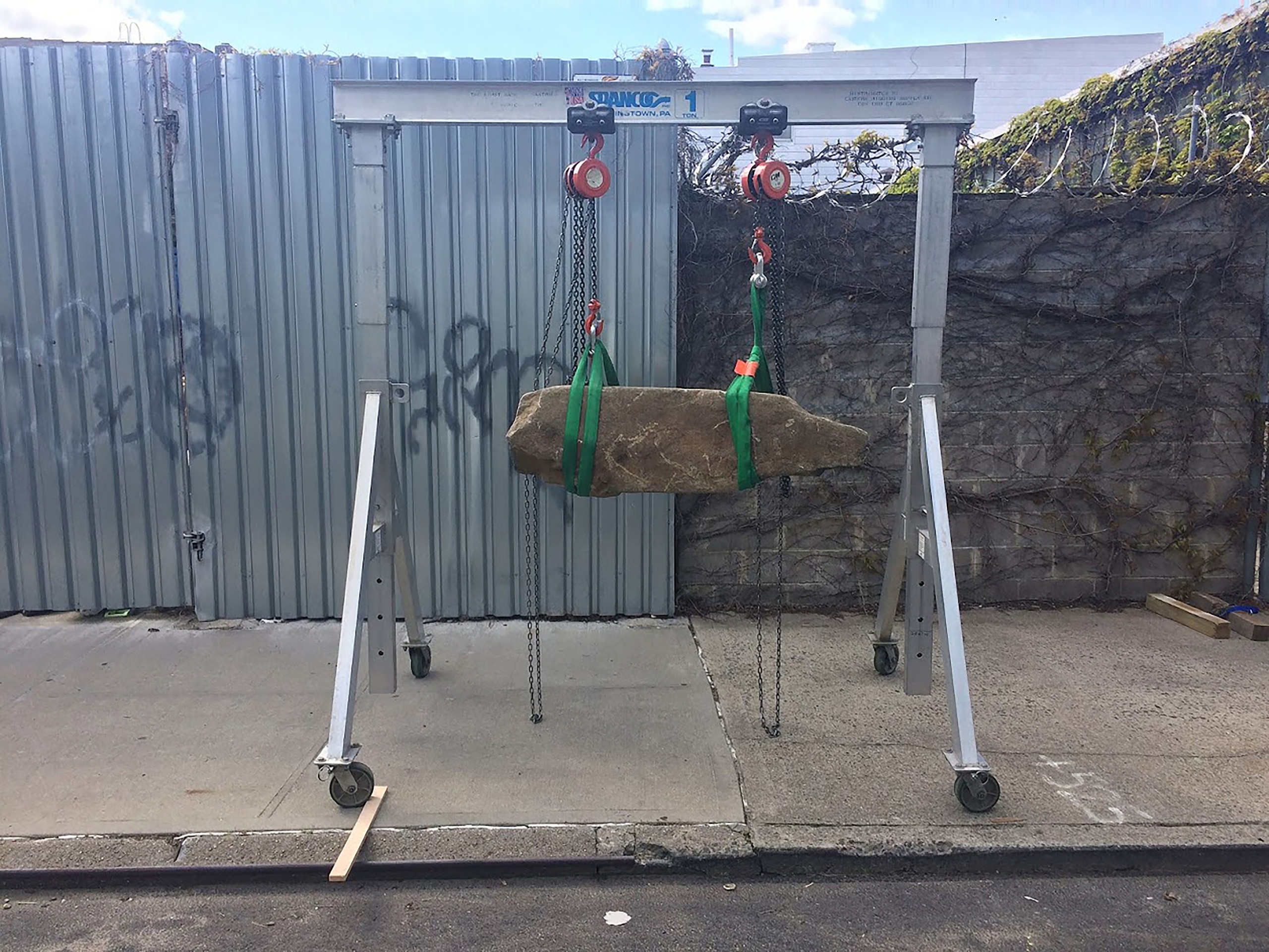
10th Street Stone Yard, 2018; while working at the Noguchi Museum in Queens in 2018, de Nobriga took on a project transforming an adjacent lot into an outdoor studio, surveying, excavating, and grading the site. In the process, he unearthed various metamorphic rocks and documented selections from his findings.
Prattfolio: How did you find your materials, or the areas of concern you wanted to start working in?
KDN: Between the transition from graphic design to sculpture, during that year, I worked at a sculpture supply store in Tribeca, the Compleat Sculptor. I walked from my apartment in Brooklyn to Tribeca, back and forth every day, and slowly realized that that was the material, this act of walking and engaging with my environment in a very direct way. And from then on, I was able to develop my first sculptural piece.
I took on various jobs while studying at Pratt, and one of the most influential jobs was at a concrete construction company. They worked on restoring townhouses, and I think that material spoke to me in a very strong way. I responded to it, and then brought that back to the studio, so I sort of fell into material—it didn’t really happen in a romantic way, it was just available and economical, and I saw the potential in it—specifically, concrete, and any type of raw stone or found stone. It was something I was able to move with and trust, and produce works.
AS: One of the questions [on Prattfolio’s list] was about obstacles and overcoming them. Your way of engaging with life and work has been very much about that. You understand that that’s where things are happening, in that process of turning a problem into an opportunity. That was something that was clear from the materials, and being very much in tune with your surroundings and what to do with them—writing, and experiencing and understanding the city, thinking of this notion of making art as a way of engaging with life. You have become my mentor as much as I was yours at some point.
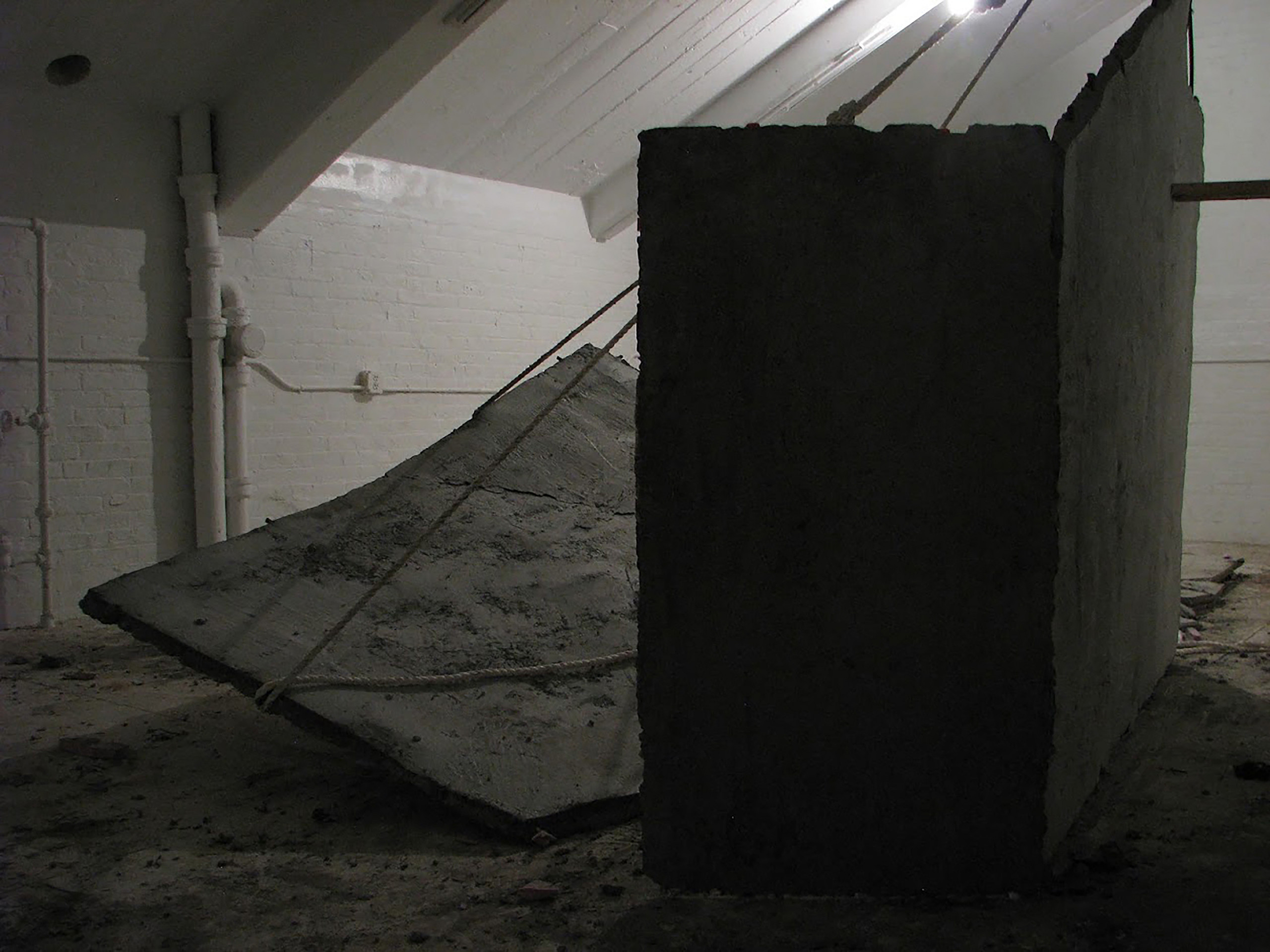
To Consider Absence as an Index, 2015, inspired by de Nobriga’s time working at a construction company, engages with the physical experience of labor as it relates to the creation of the built environment.
It was clear to me that you understood the gates around campus as porous, and open. I believe there is a fluid relationship among the disciplines in your thinking. It is not just an anecdote that you went from graphic design to sculpture to architecture, which is in a way very similar to my trajectory—I have a BFA degree in graphic design, and in my own art practice I have been navigating the relationship between art/design and architecture as well. So, what happened in those transitions in the last few years, and what do you think this new chapter is going to bring?
KDN: After finishing at Pratt, I desperately wanted to continue a studio practice, but of course understood as well that I needed to have a job, I needed to work. I was drawing from our earlier conversations, back in 2013—I remember confiding in you at that time as to how difficult that period in my life was, and you said something along the lines of, you need to re-address how you treat the struggle. How do you transform the struggle?
I thought, how can I benefit the most from a job? I decided to position myself in places that were learning environments, working in various workshops of fabrication industries, working in the galleries, really trying to understand the inner workings of the art world and also to own these various skills that I had started developing.
When I returned to Pratt as a sculpture student [after taking a leave], I was working this job at a concrete fabrication company. I befriended my boss at the time, and he observed in me these interests in structural design and GFRC [glass fiber reinforced concrete] and concrete fabrication and rigging and understanding loads, et cetera, and he suggested that I take advantage of my education at Pratt more. That I take architecture classes, audit them if I could, to build a foundation. And that’s exactly what I did—I wrote to professors in the architecture department and asked if it would be OK to sit in on their classes. I took Statics and Strengths of Materials, Concrete Design, things that I thought would inform the work that I was thinking about and trying to make at the time. It was really helpful, and it informed how I thought about work.
Now, transitioning into architecture is about having time to work, to study, and to continue to develop my ideas.
I think about the power of education—to have this understanding of yourself in the world and to be able to engage with agency is a real type of freedom, and it’s a way to truly navigate obstacles.
Keiron de Nobriga
AS: If I think of one’s education as a journey, a very important aspect of a BFA degree, it has to provide necessary tools to engage with society. So, I was thinking about two things: first, how and if the Institute provides pathways for an interdisciplinary approach, and at the same time, if that gives agency to a student to forge their own education. Since in your case, you were a student creating a unique education based on personal interest.
I see that what you’re bringing into your research is an expanded notion of the concept of “citizenship” that we’ve talked about many times through these years. I’m thinking then of the freedoms you see within having the opportunity to access education and being a student, now that you will start your master’s. So, I was wondering about the relationship between education and freedom, or between education and citizenship, and how they relate to each other, how they connect. Do you think that education is a key, or a portal to a certain level of freedom?
KDN: Of course. I’ve experienced my own otherness, my own difference, via reflection of others that look exactly like me, constantly, daily, and the only way to engage with that encounter is through identifying and acknowledging what disparity looks like. I find myself returning to where I started, and everything that I was able to gain throughout my time at Pratt Institute, and even afterwards.
That time and space fostered a real desire for knowledge. And I think there’s something quite liberating when you experience yourself, I mean really experience your capacity to learn and understand new things. To be able to demystify things is really empowering, whereas the adverse is disenfranchising. I think my issue societally is that there are far too many disenfranchised individuals, operating and functioning, amazing technicians, and that understanding isn’t available to them, isn’t something that’s accessible—the understanding of the importance of education as a type of freedom.
I think about the power of education—to have this understanding of yourself in the world and to be able to engage with agency is a real type of freedom, and it’s a way to truly navigate obstacles. Critical thinking is certainly something that one can gain within a school environment.
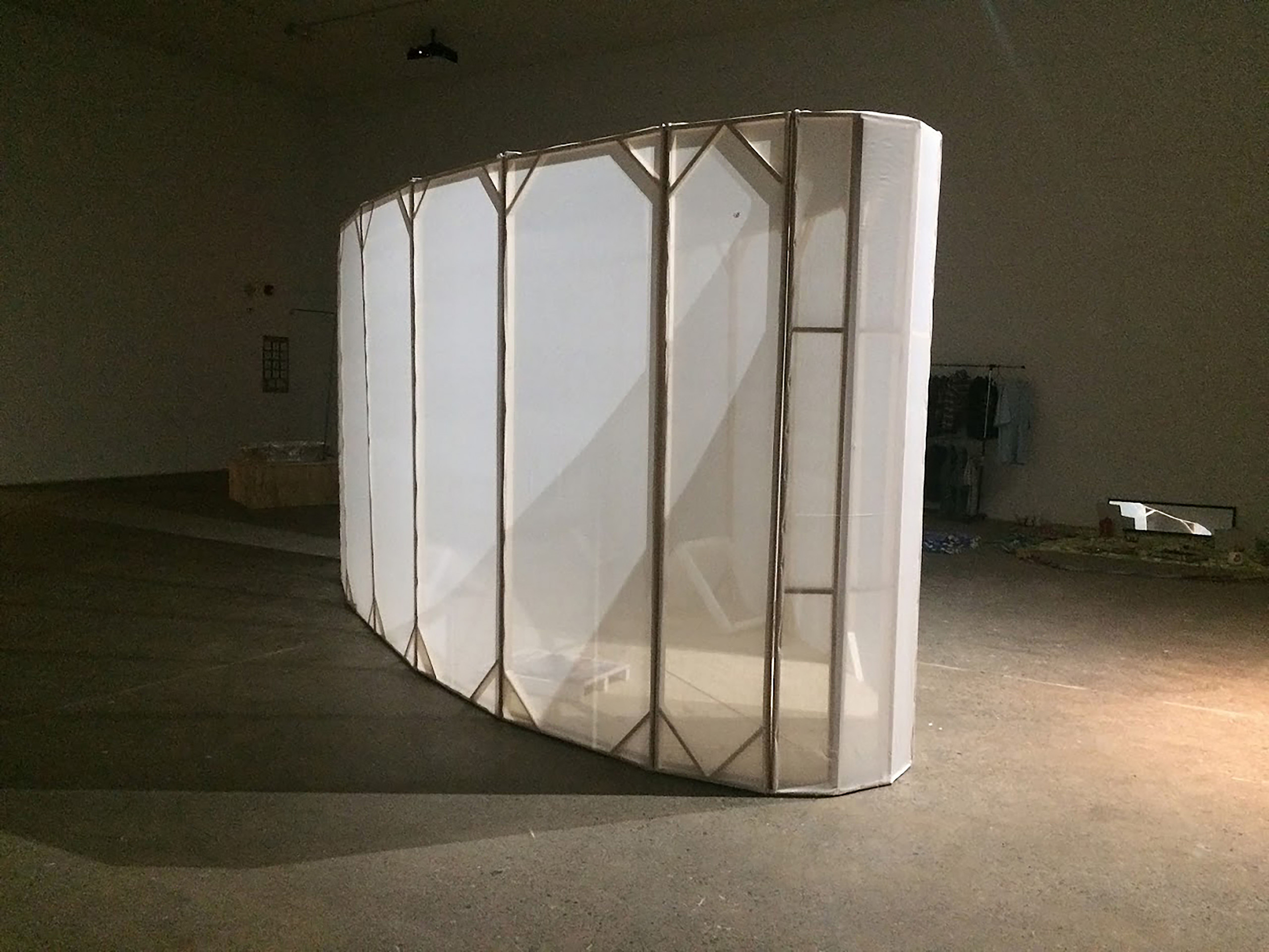
Flesh + Mesh, 2019; de Nobriga created this structure for an exhibition at the Crane Arts building in Philadelphia.
AS: And that’s a great segue—you and I recently visited the Consortium for Research and Robotics at Pratt. We’ve been talking about your interest in robotics and digital media. I think that after COVID, we’ve been pushed to deal with the 21st century in a way that we did not expect. We’re working towards providing as part of this sculpture and integrated practices program more and more because it’s needed as a tool, but I think that in your case it was also a very clear possibility in terms of your work and upcoming research, reflecting on the implications as well as applications of that.
KDN: It is inevitable—robotic arms, robotic manipulators, simulation software, artificial intelligence, machine learning algorithms, all of this is sort of already a leap ahead of us. As far as understanding these tools and how they’re used, artists have always been very good at taking the tool outside of its standard function, using it differently. I think about the land artists, for instance, how they have used construction tools to create massive depressions in the earth. The next generation of students will have a sort of foresight that can shift their use. It’s really necessary to use the contemporary language, to not only just write with it, but write poetry and philosophy, and tackle ethical questions. [These tools are] a language.
Prattfolio: Do you want to talk about the kind of big questions, the thematic material of your work, that you’re writing about, or that you hope to be writing about.
KDN: It’s all quite provisional right now, but I’m drawing on my own experience: physical labor, labor disparity, especially in the construction workforce. It has for a long time troubled me, observing what day-on-day work does to the body, and to the mind. I’ve been thinking about uses of robotics in architecture and construction that address this issue of labor disparity. I should foreground that by saying that I’m not at all wanting to replace the construction worker. But I think there are gaps within the work process, the process of handling materials, setting up tools and machinery to then get a job done, that can probably be addressed with robotics and AI.
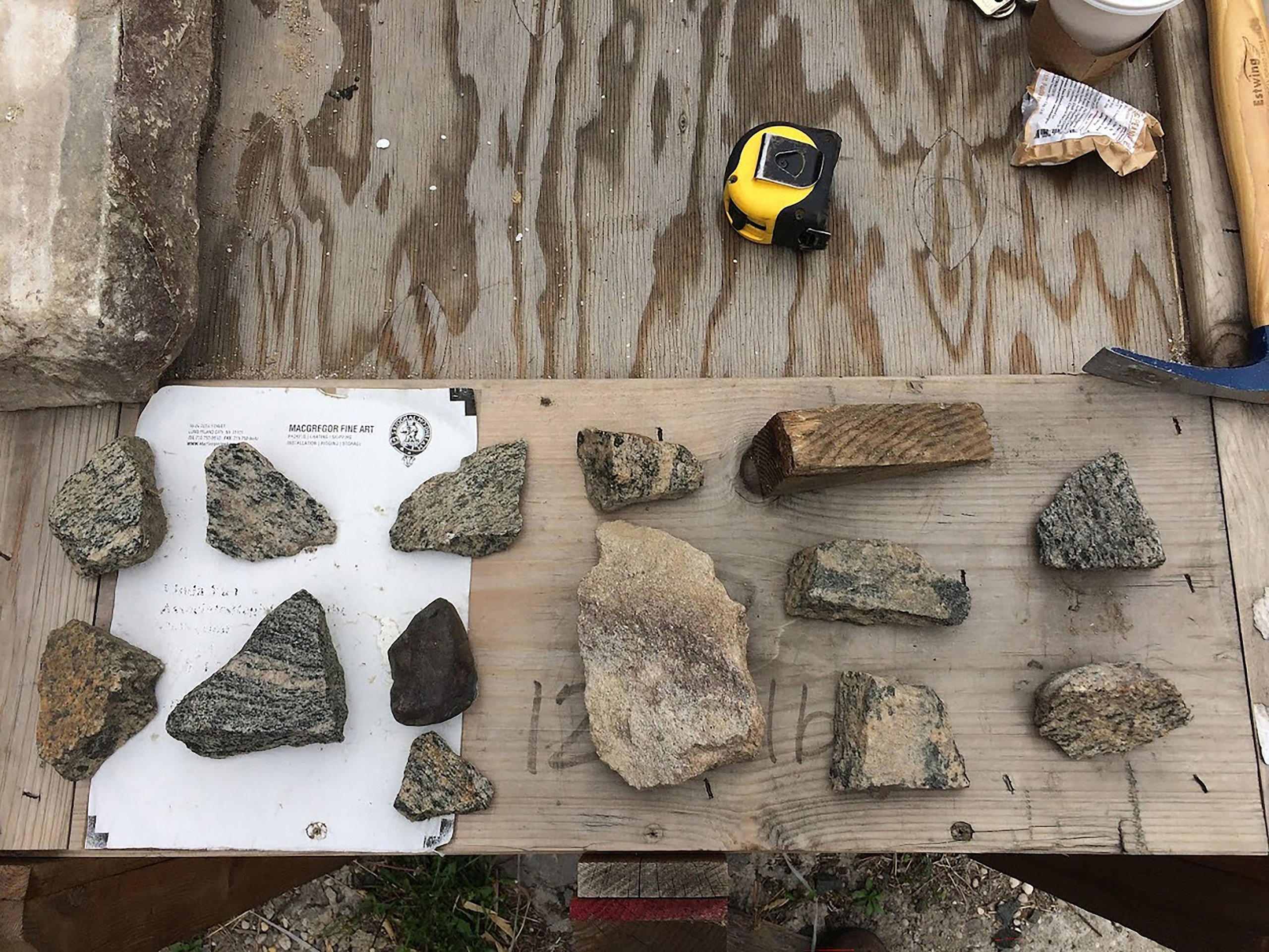
10th Street Stone Yard, 2018
AS: I understand the way you are thinking as a “sculptural way of thinking”—the interest in the process of transformation and exchange that takes place in an encounter that goes beyond a material and/or physical one. We can even understand the back and forth that takes place during critiques [as part of that process], an opportunity to interact with others. This concept highly resonates with the philosopher Luce Irigaray—and her ideas in the book To Be Two, which I have been revisiting in the last year or so when we have been challenged to adapt and hopefully create new ways of exchange with our surroundings. If, as she addresses, we consider the “other” as a subject— and respect and embrace their complexity—and not as an object available for consumption, then the world will be a different place.
KDN: If we go back to the earlier question about the importance of education, we have to also acknowledge, not everyone has access to college education, for many reasons, but that doesn’t mean there aren’t other pathways toward the same type of empowerment. What we’re really after is a type of, or what I idealize as a type of relationship with the mind and life of the mind. I think that can take many forms and work can be any type of work, really, and having any type of skill can be incredibly gratifying and incredibly empowering.
AS: So, going back to your experience at Pratt, what’s one class that you wish would have existed in the program when you were a student?
KDN: I think every sculpture student, every artist in school, would benefit from some sort of business class—not that one should define their practice based on an ability to be very good at managing capital—or a class on ethics within sculpture.
AS: We have included in the curriculum a course called professional practices, to think about the tools, and what is needed in order to facilitate the transition from school into the workforce.
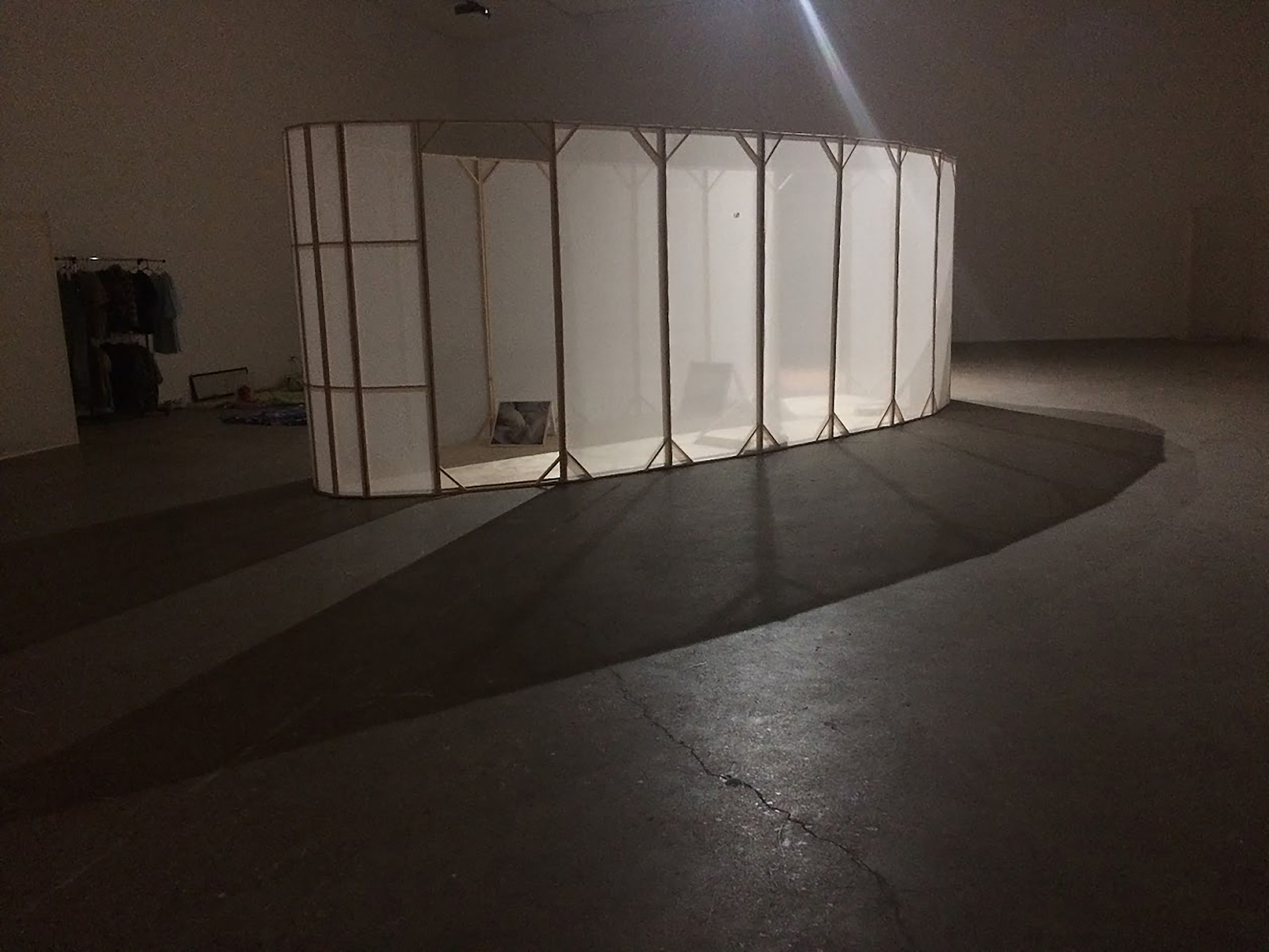
Flesh + Mesh, 2019
Prattfolio: Keiron, having navigated that transition, what advice would you give to students trying to balance their work and other sides of their worlds? Are there any strategies or tactics you use to anchor yourself in your practice?
KDN: It is important to be hard on yourself, but not too hard—be generous with yourself. Give yourself room to rest, give yourself room to fail. I think it’s hard, of course, especially when you care deeply about what you do. And there will be multiple moments when it feels like whatever you’re after doesn’t seem possible because of other obligations that you’re committed to, but I try to view the world as this is malleable material that allows for a lot of push and pull and a lot of wiggling and moving through. I think we can treat ourselves and the world in the same way, working through, moving through difficulties and finding ways to progress.
I would also say, relationships are something, I’m learning, to be valued and to be nurtured, and it also takes a lot of work, but it’s important to have someone that can receive you in your hardest times—friends, family, or a partner. That relationship is reciprocal. There’s a balance that takes off some of the load, allows for reassurance and revitalization. The work that you commit yourself to can be all-consuming. It’s really important to step away, to be generous to yourself, and to balance energy between work and relationships.
AS: It is a privilege but also definitely important to have time to “rest” and reflect as part of the creative process. I was recently reading a book about rituals, and the author [describes] how in Western culture, the belief is that God created the world in six days and then he used the seventh day to rest. And we assumed that the seventh day to rest is because he was tired after the six days. But actually, the seventh day is not only a component but a crucial part of the process. The “pause” is actually there to give meaning to everything else that you have done. Which is clearly another challenge that we have to negotiate every day, especially in the super fast-paced life that we live in. And I understand that it is important to give space to question and redefine for ourselves what “productivity” and “success” mean.
KDN: Technology is a leap ahead of us, and we’re all trying to catch up to it, especially given the pandemic, how everything just felt accelerated when we were all collectively tossed into this channel. To try to grapple with it can be incredibly exhausting, and then to return to work can be equally exhausting. So I think it’s important to step back, to create a balance, to trust the work and to trust yourself.
